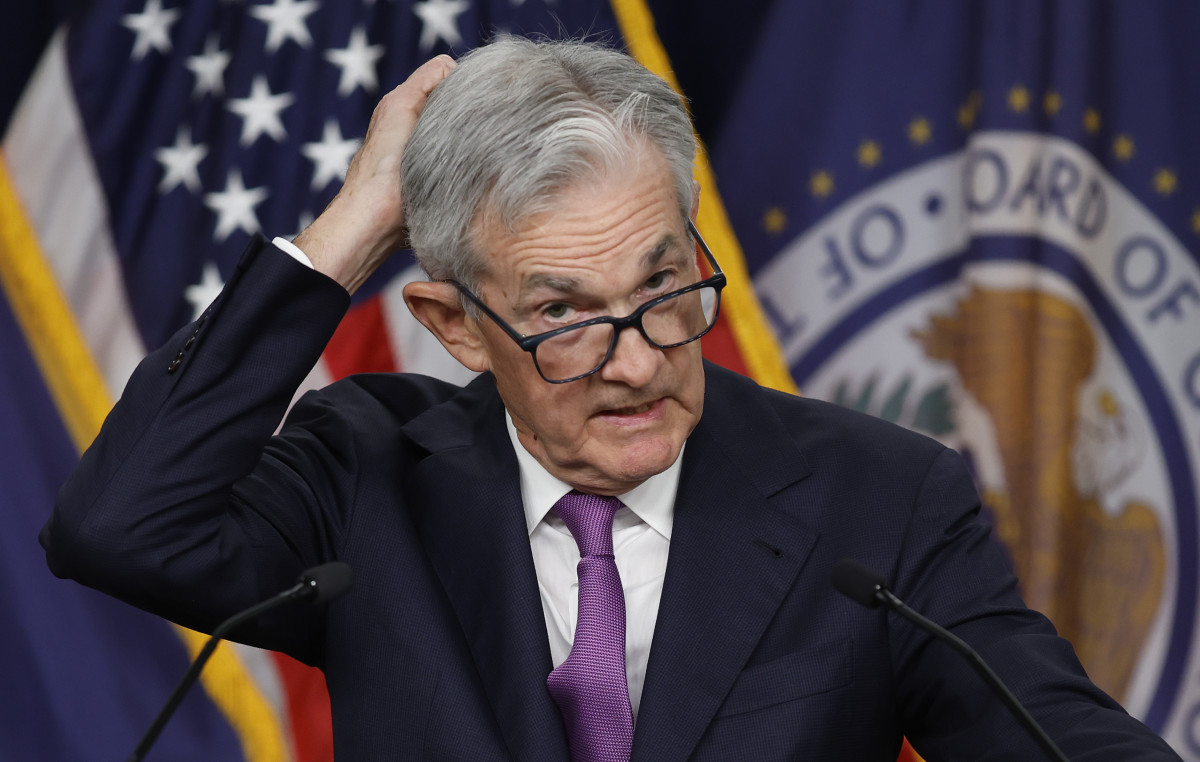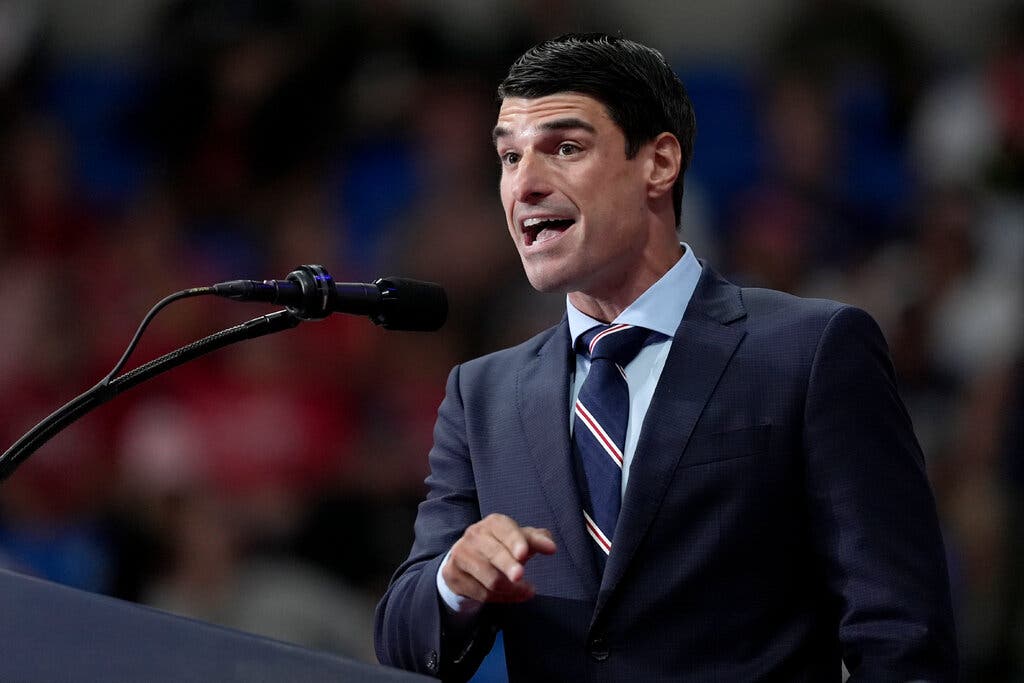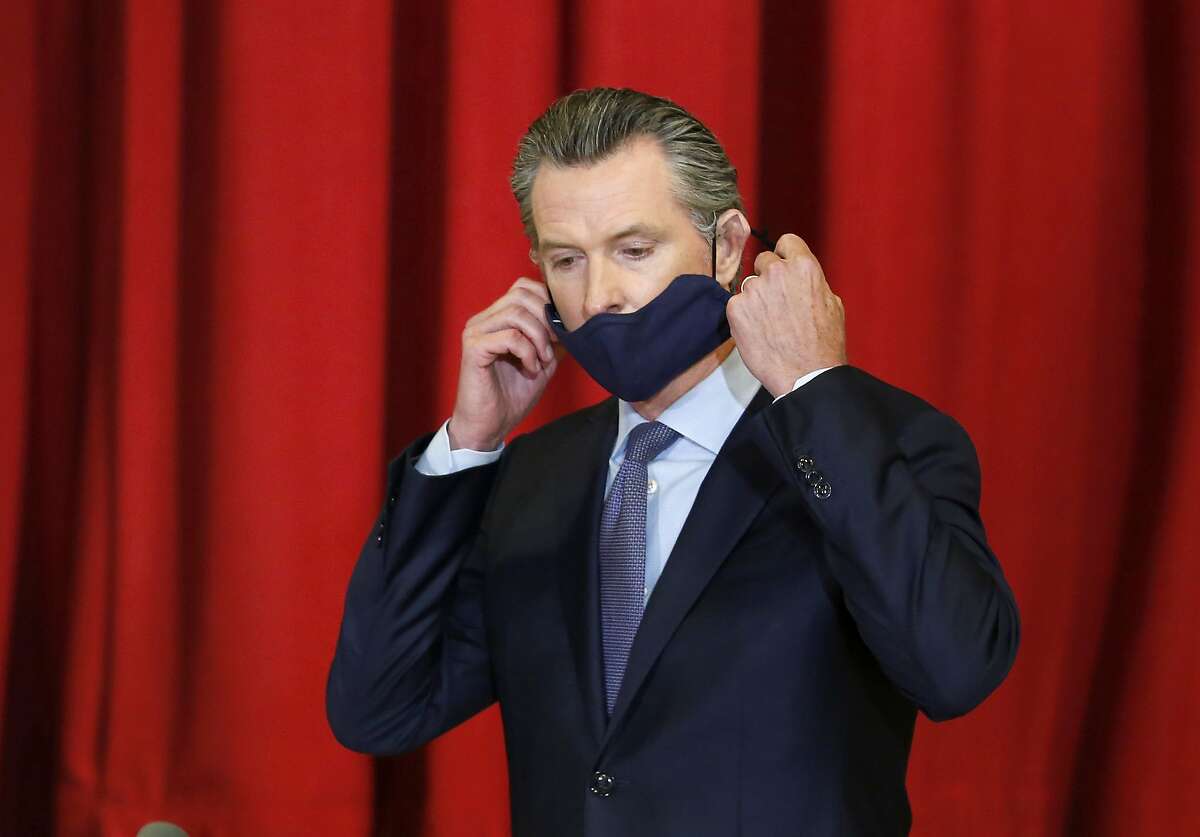Navigating The Aftermath: The Challenges Facing The Next Federal Reserve Chairman

Table of Contents
Inflationary Pressures and Monetary Policy Tightrope
The incoming Federal Reserve Chairman will face the immense challenge of balancing inflation reduction with sustained economic growth. This delicate tightrope walk requires precision and careful consideration of various interconnected factors.
Balancing Inflation Reduction with Economic Growth
Maintaining price stability is a primary mandate of the Federal Reserve. However, aggressively combating inflation through steep interest rate hikes risks triggering a recession, leading to job losses and economic hardship. The next Federal Reserve Chairman must find a path that effectively cools inflation without causing undue economic pain.
- Maintaining interest rate hikes while monitoring employment data: The Fed will need to carefully analyze employment figures, inflation rates, and other key economic indicators to determine the appropriate pace of interest rate increases. Too slow a response risks entrenched inflation, while too rapid a response might trigger a recession.
- Managing market expectations and communication transparency: Clear and consistent communication with the markets is crucial to manage expectations and avoid unnecessary volatility. The Federal Reserve Chairman must effectively convey the central bank's strategy and rationale to build market confidence.
- Assessing the impact of quantitative tightening on financial markets: The unwinding of the Fed's balance sheet, known as quantitative tightening (QT), impacts financial markets and credit conditions. The Chairman must carefully monitor these effects and adjust policy accordingly.
- Addressing the potential for stagflation: The simultaneous occurrence of high inflation and slow economic growth, stagflation, poses a significant threat. The Federal Reserve Chairman must develop strategies to mitigate this risk, considering supply-side factors contributing to inflation.
Navigating Geopolitical Uncertainty
Global economic and geopolitical events significantly impact the U.S. economy, adding another layer of complexity to the Federal Reserve Chairman's responsibilities. Adaptability and a nuanced understanding of international dynamics are crucial.
- The ongoing war in Ukraine and its effect on energy prices: The conflict in Ukraine has disrupted global energy markets, contributing to inflationary pressures. The Federal Reserve Chairman must consider the impact of these energy price shocks on the U.S. economy.
- Supply chain disruptions and their influence on inflation: Ongoing supply chain bottlenecks continue to fuel inflation. The Chairman must work to understand and address these disruptions to ease inflationary pressures.
- The impact of global recessionary risks on the U.S. economy: A global recession could significantly impact the U.S. economy. The Federal Reserve Chairman must develop contingency plans and strategies to mitigate the effects of a potential downturn.
- Managing potential capital flight due to global instability: Geopolitical uncertainty can lead to capital flight from the U.S. The Federal Reserve Chairman must implement policies to maintain investor confidence and attract investment.
Managing Debt and Fiscal Policy Coordination
The U.S. national debt and the need for effective fiscal policy coordination pose significant challenges for the next Federal Reserve Chairman.
The Looming National Debt
The substantial U.S. national debt exerts upward pressure on interest rates and impacts economic stability. This necessitates close collaboration between the Federal Reserve and the government.
- The need for fiscal responsibility and coordination with Congress: Effective management of the national debt requires fiscal responsibility from Congress. The Federal Reserve Chairman must work closely with Congress to develop sustainable fiscal policies.
- Potential impact of debt ceiling negotiations on market confidence: Debt ceiling debates can create uncertainty and negatively impact market confidence. The Federal Reserve Chairman must manage these risks effectively.
- Strategies for managing long-term debt sustainability: Long-term strategies for reducing the national debt are crucial. The Chairman must advocate for policies promoting fiscal sustainability.
- Balancing fiscal policy goals with monetary policy objectives: The Federal Reserve Chairman must skillfully balance fiscal and monetary policy goals to achieve macroeconomic stability.
Navigating the Regulatory Landscape
The Federal Reserve plays a crucial role in financial regulation, balancing the need for stability with the promotion of innovation.
- Addressing the evolving risks in the financial technology sector (Fintech): The rapid growth of Fintech requires careful regulatory oversight to mitigate potential risks.
- Maintaining oversight of systemic risk in the banking industry: The Federal Reserve must continue its vigilance in overseeing systemic risk within the banking system.
- Balancing regulations to encourage innovation while mitigating risks: Regulations must strike a balance between promoting innovation and safeguarding against excessive risk-taking.
- Adapting to the changing landscape of cryptocurrency and digital assets: The emergence of cryptocurrencies and digital assets presents novel challenges that require careful regulatory consideration.
Maintaining Public Trust and Communication
Effective communication and the maintenance of public trust are vital for the success of the Federal Reserve.
Transparency and Communication Strategy
Clear, consistent, and transparent communication with the public and financial markets is essential for maintaining stability and confidence.
- Clearly articulating the Fed’s goals and policy decisions: The Federal Reserve Chairman must clearly explain the Fed’s goals and the rationale behind its policy decisions.
- Managing public expectations and avoiding market volatility: Effective communication helps manage expectations and reduces market volatility.
- Building and maintaining trust through consistent communication: Consistent and transparent communication builds public trust in the Federal Reserve.
- Adapting communication strategies to diverse audiences: The Federal Reserve Chairman should tailor communication to reach diverse audiences effectively.
Addressing Political Pressure and Independence
Maintaining the independence of the Federal Reserve from political influence is paramount for its effectiveness.
- Resisting undue political influence on monetary policy decisions: The Federal Reserve Chairman must resist undue political pressure on monetary policy decisions.
- Maintaining the credibility and autonomy of the Federal Reserve: Preserving the credibility and autonomy of the Federal Reserve is crucial for its long-term effectiveness.
- Effectively communicating the importance of central bank independence: The Federal Reserve Chairman should actively communicate the importance of central bank independence to the public.
- Navigating public scrutiny and criticism of policy choices: The Federal Reserve Chairman must be prepared to address public scrutiny and criticism of policy choices.
Conclusion
The next Federal Reserve Chairman faces a formidable set of challenges, requiring a blend of economic expertise, political acumen, and exceptional communication skills. Successfully navigating these complex issues – from controlling inflation and managing debt to maintaining public trust – will be critical to ensuring the long-term health of the U.S. economy. Understanding the multifaceted challenges facing the next Federal Reserve Chairman is crucial for informed citizens and market participants alike. Stay informed on the developments surrounding the next appointment and the crucial role the Federal Reserve Chairman will play in shaping the future of the American economy.

Featured Posts
-
 Vehicle Subsystem Issue Forces Blue Origin To Postpone Rocket Launch
Apr 26, 2025
Vehicle Subsystem Issue Forces Blue Origin To Postpone Rocket Launch
Apr 26, 2025 -
 Concerns Over Fan Violence Lead To Tightened Security At Ajax Az Match
Apr 26, 2025
Concerns Over Fan Violence Lead To Tightened Security At Ajax Az Match
Apr 26, 2025 -
 Trumps Proposed Ban On Congressional Stock Trading A Time Magazine Interview Analysis
Apr 26, 2025
Trumps Proposed Ban On Congressional Stock Trading A Time Magazine Interview Analysis
Apr 26, 2025 -
 Beyond Disney 7 Top Orlando Restaurants For 2025
Apr 26, 2025
Beyond Disney 7 Top Orlando Restaurants For 2025
Apr 26, 2025 -
 Toxic Democrats Newsoms Controversial Remark And Its Fallout
Apr 26, 2025
Toxic Democrats Newsoms Controversial Remark And Its Fallout
Apr 26, 2025
